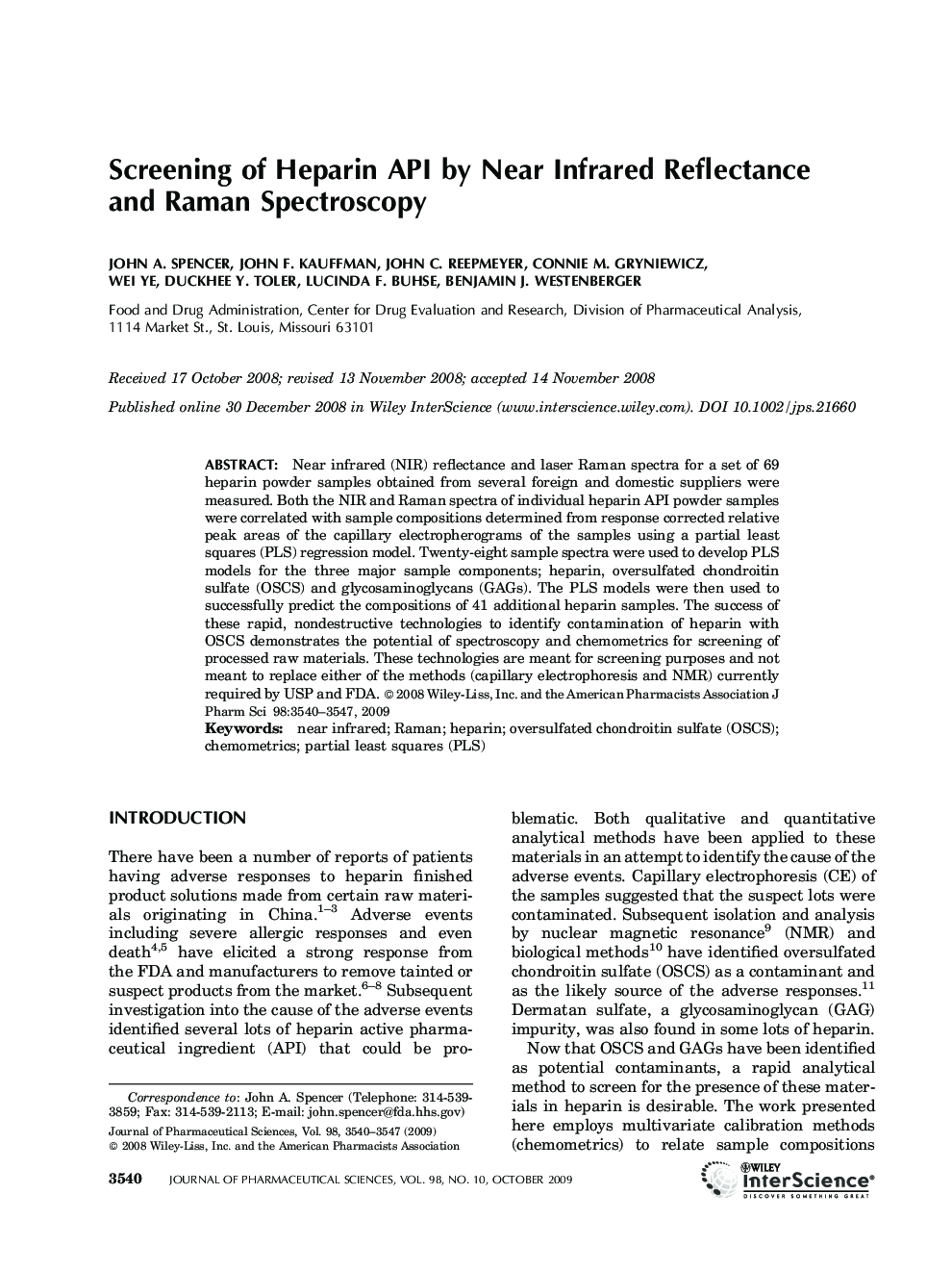| Article ID | Journal | Published Year | Pages | File Type |
|---|---|---|---|---|
| 2486376 | Journal of Pharmaceutical Sciences | 2009 | 8 Pages |
Abstract
Near infrared (NIR) reflectance and laser Raman spectra for a set of 69 heparin powder samples obtained from several foreign and domestic suppliers were measured. Both the NIR and Raman spectra of individual heparin API powder samples were correlated with sample compositions determined from response corrected relative peak areas of the capillary electropherograms of the samples using a partial least squares (PLS) regression model. Twenty-eight sample spectra were used to develop PLS models for the three major sample components; heparin, oversulfated chondroitin sulfate (OSCS) and glycosaminoglycans (GAGs). The PLS models were then used to successfully predict the compositions of 41 additional heparin samples. The success of these rapid, nondestructive technologies to identify contamination of heparin with OSCS demonstrates the potential of spectroscopy and chemometrics for screening of processed raw materials. These technologies are meant for screening purposes and not meant to replace either of the methods (capillary electrophoresis and NMR) currently required by USP and FDA. © 2008 Wiley-Liss, Inc. and the American Pharmacists Association J Pharm Sci 98:3540-3547, 2009
Related Topics
Health Sciences
Pharmacology, Toxicology and Pharmaceutical Science
Drug Discovery
Authors
John A. Spencer, John F. Kauffman, John C. Reepmeyer, Connie M. Gryniewicz, Wei Ye, Duckhee Y. Toler, Lucinda F. Buhse, Benjamin J. Westenberger,
